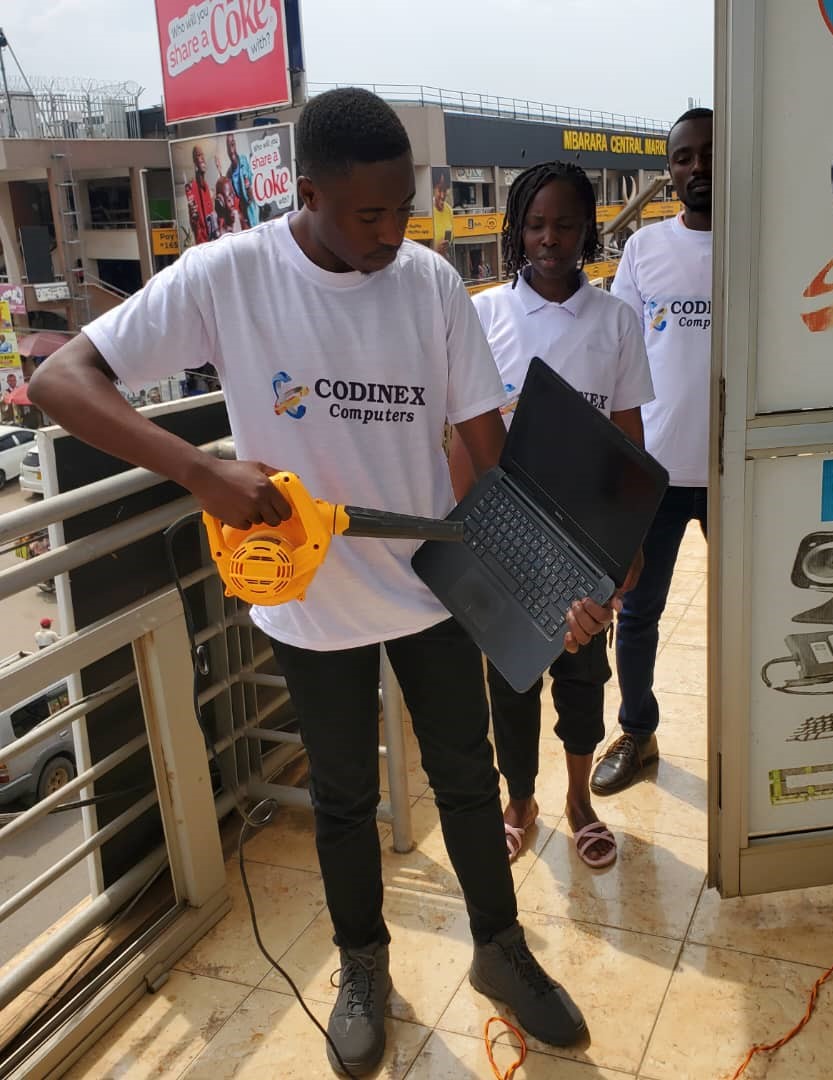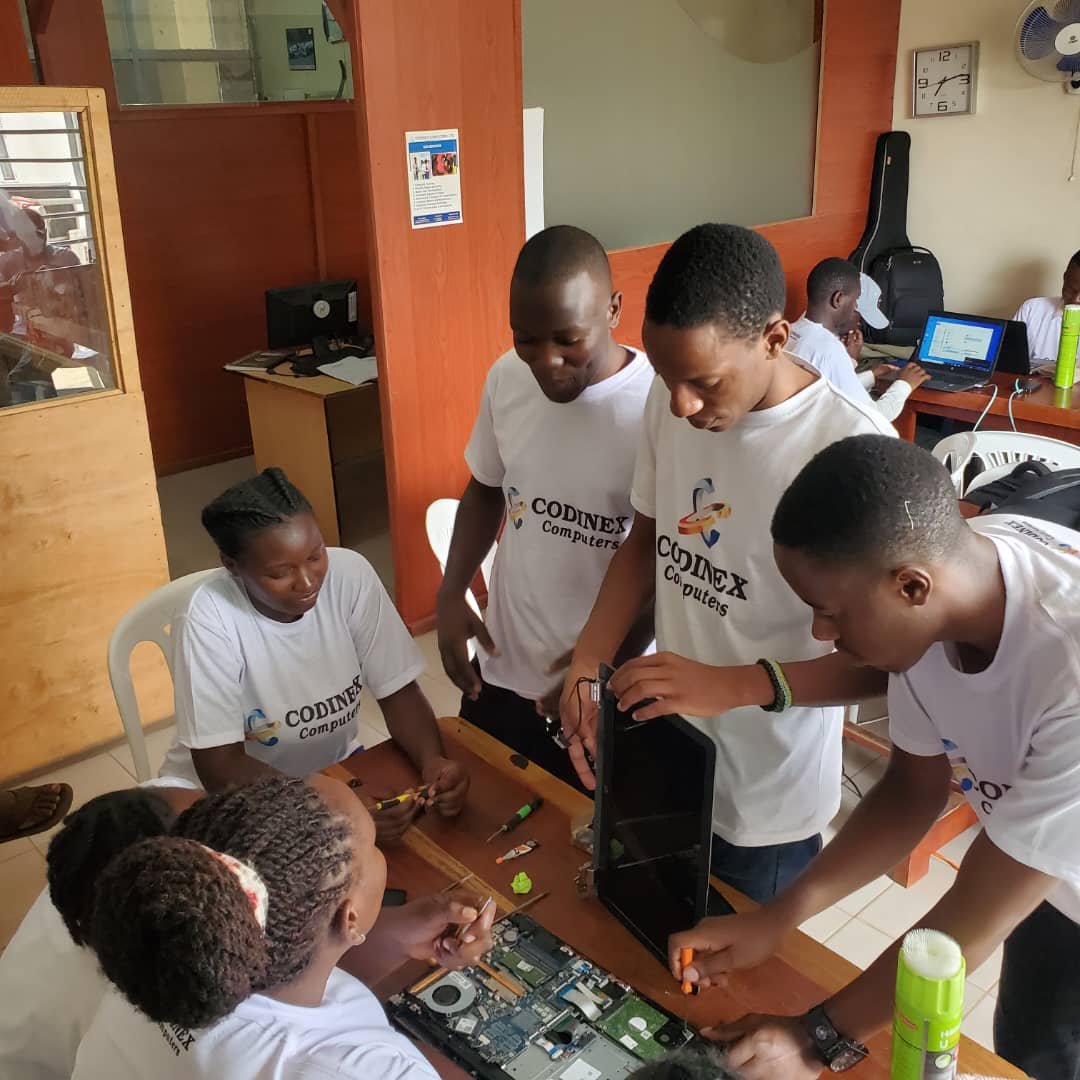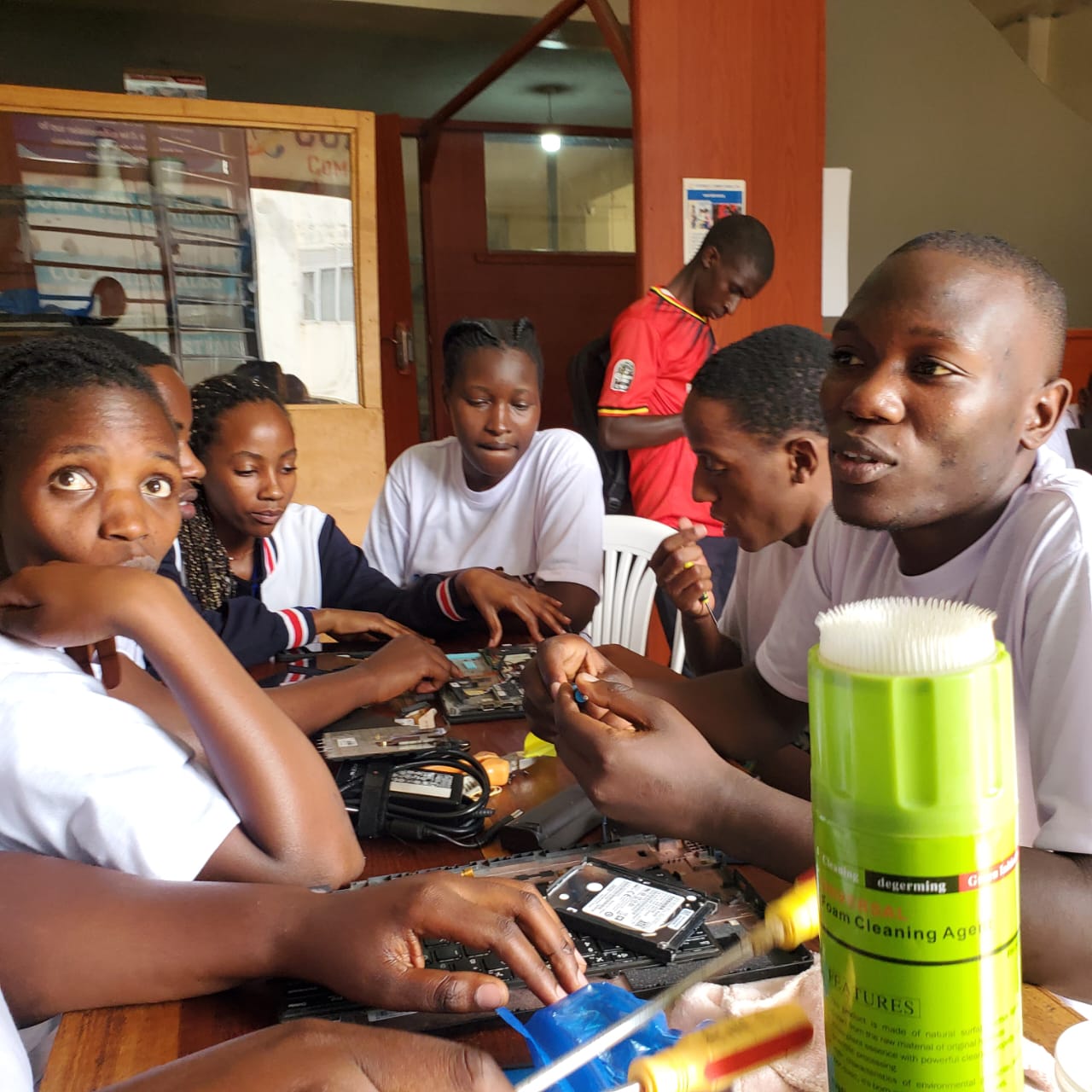2025 INTERNSHIP
Training Content
From June 2nd to July 25th, we hosted an intensive internship program that brought together passionate students who delved into hardware engineering, software mastery, graphics design, artificial intelligence, networking, and CCTV systems.

Timeline: 2nd – 6th June
Computer Hardware Repair
Students began by learning the anatomy of a computer — identifying motherboard components, understanding processors across generations, and exploring the role of memory, storage drives, and BIOS. The highlight was disassembling and reassembling complete systems, ensuring they understood both hardware installation and troubleshooting.
PC Assembly Challenge
Students worked in pairs to fully disassemble desktop, laptop computers and reassemble them within a time limit, supervised for accuracy and performance testing.
Fault Diagnosis
Supervisors introduced systems with common faults (e.g., no boot, power failure, faulty RAM) and students applied troubleshooting steps to restore functionality.
✅ Outcome
By the end of the week, interns could confidently diagnose, fix, and assemble a working computer system from scratch.
Timeline: 9th – 13th June
Software Installations
With hardware mastered, students shifted to system setup and configuration. They installed Windows (7–11) and Ubuntu Linux, experimented with dual-boot systems, installed drivers, and configured antivirus solutions.
Multi-OS Setup Lab
Groups created dual-boot systems (Windows + Ubuntu), ensuring smooth driver installations and system updates.
System Hardening Project
Students set up fresh Windows installations and configured them with antivirus and essential applications for maximum security and efficiency.
✅ Outcome
Students gained IT support-level proficiency, able to set up and secure machines independently.
Timeline: 16th – 20th June
Graphics Design
Creativity met technology as students explored Adobe Photoshop and Illustrator. They learnt how to design simple logos, flyers, and digital posters. They explored different design tools and learnt many design principles.
Logo Design Challenge
Each student designed a personal logo or one for a fictional startup.
Digital Poster
Teams created posters for a community IT service campaign, health sectors etc and were supervised for creativity and design principles.
✅ Outcome
Students walked away with design portfolios, showcasing digital graphics that balanced creativity with functionality.
Computer Servicing Day
Timeline: 21st June

Maintenance & Cleaning
Students didn’t just fix problems they prevented future ones too.
Hardware Repair
Students applied their knowledge of computer hardware components to diagnose and fix problems
Software Installation
Reinstalled or upgraded operating systems, Update or reinstall drivers to restore functionality.


Data Backup & Recovery
Backed up important documents, photos, and files.
Recovered accidentally deleted files where possible
Networking & Connectivity Fixes
Configuring network settings for LAN and Wi-Fi. Troubleshooting router connectivity issues.
Timeline: 23rd – 27th June
Foundations of Artificial Intelligence (AI)
Students explored AI theory and practical basics — covering machine learning types, ethical AI, and Python for AI (NumPy, Pandas, Matplotlib). Supervisors emphasized data preparation as the foundation of any AI project.
Students moved into applied AI. They worked with logistic regression, KNN, and OpenCV for image recognition. Supervisors introduced NLP basics, teaching text preprocessing and sentiment analysis.



Timeline: 7th – 11th July
Building Real-World AI Projects
This was the capstone stage of the AI journey. Students used pre-trained models and APIs (Hugging Face, OpenAI) to accelerate their projects, while supervisors guided them on ethical AI practices.
Hands-on Projects
-
Chatbot Prototype: Teams built Python-based chatbots using OpenAI APIs to answer FAQs.
-
Image Recognition App: A group designed a prototype that could detect objects in uploaded photos.
-
AI Ethics Debate: Supervisors led discussions on bias in datasets and responsible use of AI in communities.
✅ Outcome: Students not only built projects but also learned how to evaluate them critically and ethically.
Timeline: 14th – 24th July
Networking & CCTV Systems
The final technical stage focused on networking fundamentals and security systems. Students practiced cable termination, LAN setup, router configuration, and CCTV installation.
LAN Setup Lab
Groups designed a small office LAN, sharing printers and files across connected devices.
Router Configuration Task:
Students configured routers for P2P connectivity and MiFi integration.
CCTV Setup Project
Under supervision, interns installed and configured CCTV cameras, simulating a security system for a small office.
✅ Outcome
Students graduated with practical networking and security system deployment skills.
Timeline: 25th July
Program Wrap-Up & Certification
On the final day, students showcased their projects, reflected on their journey, and received certificates of completion. Supervisors highlighted individual strengths and growth areas, making this both a celebration and a launchpad for future careers.
Conclusion: Beyond the Internship
This internship was not just a training schedule — it was a hands-on laboratory for real-world innovation. Students left with:
-
A portfolio of projects in hardware, software, design, AI, and networking.
-
The confidence to solve real technical problems.
-
A foundation to grow as innovators, IT professionals, and AI practitioners.
For institutions, companies, and partners, this program proves that with the right guidance, students can rise beyond theory to become workplace-ready professionals.
